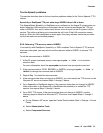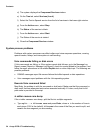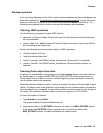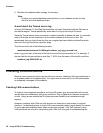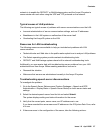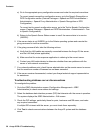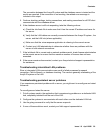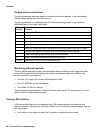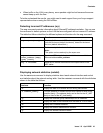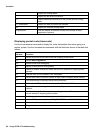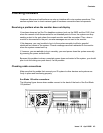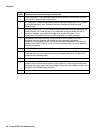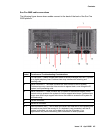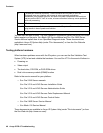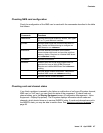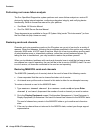
Contents
Issue 1.0 April 2006 41
• When traffic on the LAN is very heavy, some packets might be lost because the server
cannot keep up with the flow.
To better understand the results, you might want to seek support from your Avaya support
representative when running the LAN utilities.
Detecting incorrect IP addresses (arp)
The arp command provides information about Ethernet/IP address translation. You can use
the command to detect systems on the LAN that are configured with an incorrect IP address.
The table that follows identifies the different options and functions for the arp command.
Command Function
arp -a [Unix[kmem]]
Display all of the current ARP entries by reading the table
from the file kmem (default /dev/kmem), based on the kernel
file Unix (default /kernel/Unix )
arp -d hostname
Delete an entry for the host called hostname.
Note:
This option can be used only by the super-user.
arp -s hostname
ether_address [temp]
[pub] [trail]
Create an ARP entry for the host called hostname with the
Ethernet address ether_address.
arp -f filename
Read the file named filename and set multiple entries in the
ARP tables
Displaying network statistics (netstat)
Use the netstat command to display statistics about each network interface and socket
and statistics about the network routing table. Use the netstat command with the attributes
shown in the table that follows.
Attribute Function
-a
Display the state of all sockets and all routing table entries.
-f address_family
Limit the statistics or address control block reports to those of the
specified family. (The address family can be inet for the AF_INET
family or Unix for the AF_Unix family.)
-g
Display the multicast group memberships for all interfaces.
-i
Display the state of the interfaces that are used for TCP/IP traffic.
-m
Display the STREAMS statistics.
-n
Display the network addresses as numbers.
-p
Display the address resolution tables.



